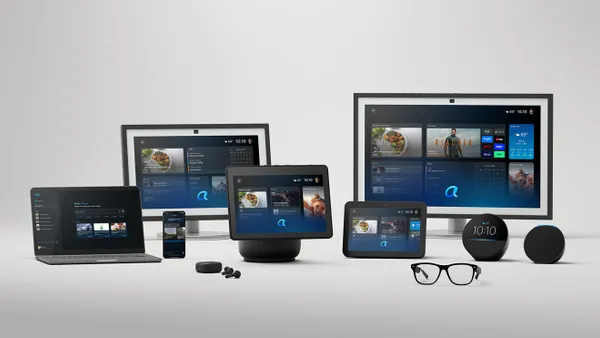Ask a roomful of people about their grocery shopping habits, and you’ll likely hear dozens of different answers. Everyone has personal preferences, whether shopping on a specific day of the week, visiting certain stores or even finding ways to save.
Just a few years ago, most consumers would have described their grocery shopping experience as almost entirely in-person. Yet, like many industries, grocery shopping rapidly evolved during the COVID-19 pandemic. Research from JPMorgan found that the pandemic sped up the expected trajectory for grocery delivery growth by about three years.
Today, the balance between in-store and online shopping has shifted significantly, creating new opportunities for grocers. With the right technology, grocery retailers can build seamless hybrid shopping journeys that keep customers engaged and satisfied.
From status quo to groceries on the go
Initially driven by necessity, hybrid shopping options have endured beyond the pandemic. Four out of 10 consumers now blend online and in-store shopping, according to a recent study by PYMNTS. As more shoppers adopt hybrid options, expectations around convenience, speed and consistency are rising.
Meeting new consumer expectations
To attract and retain hybrid shoppers, grocers should prioritize creating strong, memorable customer experiences centered around:
- Convenience: Shoppers choose hybrid options like buy online, pickup in-store (BOPIS) and curbside pickup for their convenience. Avoiding crowds and skipping lines is especially appealing for Gen Z and millennials, with 36% citing convenience as their main reason for going digital.
- Speed: Hybrid shopping lets busy consumers take grocery shopping off their to-do lists. Customers enjoy a hands-off process—ordering from home and picking up with minimal time spent in-store.
- Consistency: With the expansion of omnichannel marketing across retail, shoppers now expect a seamless experience from brands, whether they’re in your store or sitting on their couch interacting with your business online.
Enhancing hybrid shopping with digital tools
Hybrid shoppers are already inclined to use the technology available to them, so grocers should make the most of it. Digital tools that help streamline pickup, allow for direct communications and personalize interactions can elevate the consumer experience. These tools also provide valuable analytics, offering insights into customer preferences and behaviors that can inform future strategies.
Five ways to elevate the hybrid shopping experience
- Streamline online order pickup: Use digital tools throughout pickup. Send confirmation emails and SMS messages with branded, trackable short links so shoppers know exactly when their order is ready. Use QR Codes to streamline transactions for those opting for contactless interactions.
- Personalize offers post-pickup: Use online order data to target hybrid shoppers with tailored campaigns. After pickup, send customers an exclusive promotion or thank-you discount and track engagement across every unique link you send out.
- Pair in-store shopping with online promotions: Add QR Codes to in-store displays to promote online-only deals or discounts, bridging the gap between physical and digital channels and encouraging shoppers to engage with both. QR Codes are a great tool for marketing your store’s app as well, so tap into the convenience and engagement they offer.
- Gather feedback for quality control: Survey customers post-pickup using short links or QR Codes to gather insights and improve the hybrid experience. Digital feedback loops, powered by these tools, help you refine services and enhance customer satisfaction by making it easy for shoppers to connect directly with your store.
- Encourage online and BOPIS orders in-store: Promote your hybrid options within brick-and-mortar stores. Use signage to highlight BOPIS benefits and include a QR Code for a discount on first online orders.
Connecting with customers wherever they shop
Whether customers prefer in-store shopping, third-party delivery or hybrid channels, grocers need to create cohesive, engaging experiences—and technology can help. By prompting customers to interact with what’s always in their hands—their phones—grocery stores can meet consumer demands while capturing valuable data to refine and personalize the shopping experience.










